Host: Fraser Cain (@fcain)
Guests:
Morgan Rehnberg (cosmicchatter.org / @cosmic_chatter)
Continue reading “Weekly Space Hangout – Oct. 17, 2014: Comet Siding Spring & Dark Matter”
Host: Fraser Cain (@fcain)
Guests:
Morgan Rehnberg (cosmicchatter.org / @cosmic_chatter)
Continue reading “Weekly Space Hangout – Oct. 17, 2014: Comet Siding Spring & Dark Matter”
Host: Fraser Cain (@fcain)
Guests:
Morgan Rehnberg (cosmicchatter.org / @cosmic_chatter)
David Dickinson (Astroguyz.com / @astroguyz)
Ramin Skibba (@raminskibba)
Brian Koberlein (@briankoberlein)
Continue reading “Weekly Space Hangout – Oct. 3, 2014: Islands, Earwigs and Other Mysteries!”
You think we’re the only place that experiences seasons? Well, think again. Anything with a tilt enjoys the changing seasons, and that includes one of the most dramatic places in the Solar System: Saturn, with its rings and collection of moons.
Visit the Astronomy Cast Page to subscribe to the audio podcast!
We record Astronomy Cast as a live Google+ Hangout on Air every Monday at 12:00 pm Pacific / 3:00 pm Eastern. You can watch here on Universe Today or from the Astronomy Cast Google+ page.
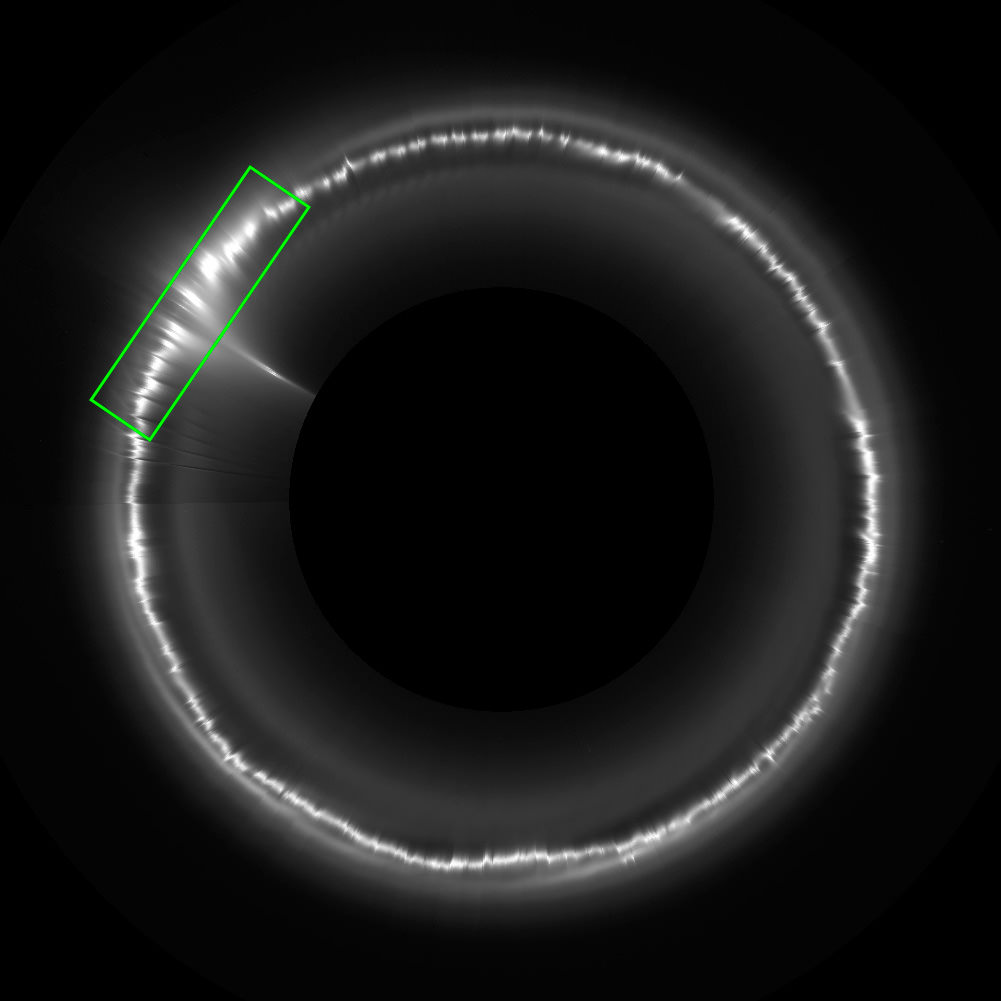
Nothing stands still. Everything evolves. So why shouldn’t Saturn’s kookie, clumpy F ring put on a new face from time to time?
A recent NASA-funded study compared the F ring’s appearance in six years of observations by the Cassini mission to its appearance during the Saturn flybys of NASA’s Voyager mission, 30 years earlier.
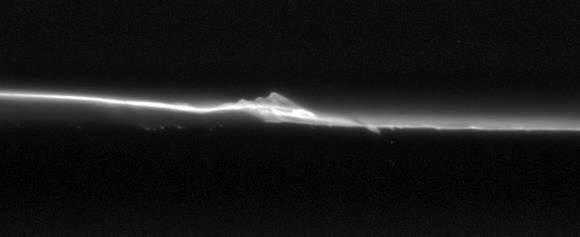
While the F ring has always displayed clumps of icy matter, the study team found that the number of bright clumps has nose-dived since the Voyager space probes saw them routinely during their brief flybys 30 years ago. Cassini spied only two of the features during a six-year period.
Scientists have long suspected that moonlets up to 3 miles (5 km) wide hiding in the F ring are responsible for its uneven texture. Kinks and knots appear and disappear within months compared to the years of observation needed changes in many of the other rings.
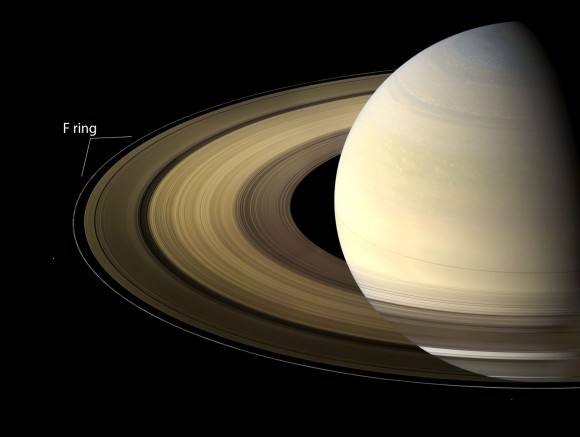
“Saturn’s F ring looks fundamentally different from the time of Voyager to the Cassini era,” said Robert French of the SETI Institute in Mountain View, California, who led the study along with SETI Principal Investigator Mark Showalter. “It makes for an irresistible mystery for us to investigate.”
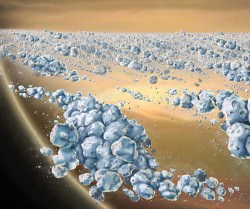
Because the moonlets lie close to the ring and cross through it every orbit, the research team hypothesizes that the clumps are created when they crash into and pulverize smaller ring particles during each pass. They suspect that the decline in the number of exceptionally bright kinks and the clumps echoes a decline in the number of moonlets available to do the job.
So what happened between Voyager and Cassini? Blame it on Prometheus. The F ring circles Saturn at a delicate point called the Roche Limit. Any moons orbiting closer than the limit would be torn apart by Saturn’s gravitational force.
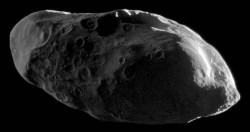
“Material at this distance from Saturn can’t decide whether it wants to remain as a ring or coalesce to form a moon,” said French. “Prometheus orbits just inside the F ring, and adds to the pandemonium by stirring up the ring particles, sometimes leading to the creation of moonlets, and sometimes leading to their destruction.”
Every 17 years the orbit of Prometheus aligns with the orbit of the F ring in a way that enhances its gravitational influence. The researchers think the alignment spurs the creation of lots of extra moonlets which then go crashing into the ring, creating bright clumps of material as they smash themselves to bits against other ring material.
Sounds like a terrifying version of carnival bumper cars. In this scenario, the number of moonlets would gradually drop off until another favorable Prometheus alignment.
The Voyagers encounters with Saturn occurred a few years after the 1975 alignment between Prometheus and the F ring, and Cassini was present for the 2009 alignment. Assuming Prometheus has been “working” to build new moons since 2009, we should see the F ring light up once again with bright clumps in the next couple years.
Cassini will be watching.
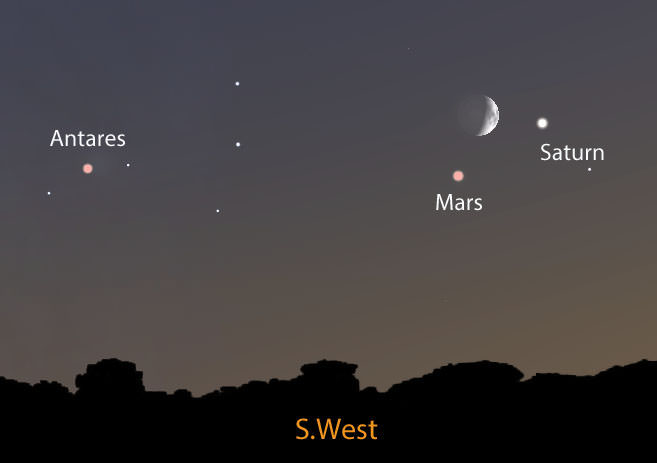
Check it out. Look southwest at dusk tonight and you’ll see three of the solar system’s coolest personalities gathering for a late dinner. Saturn, Mars and the waxing crescent moon will sup in Libra ahead of the fiery red star Antares in Scorpius. All together, a wonderful display of out-of-this-world worlds.

If you have binoculars, take a closer look at the thick lunar crescent. Several prominent lunar seas, visible to the naked eye as dark patches, show up more clearly and have distinctly different outlines even at minimal magnification. Each is a plain of once-molten lava that oozed from cracks in the moon’s crust after major asteroid strikes 3-3.5 billion years ago.
Larger craters also come into view at 10x including the remarkable trio of Theophilus, Cyrillus and Catharina, each of which spans about 60 miles (96 km) across. Even in 3-inch telescope, you’ll see that Theophilus partly overlaps Cyrillus, a clear indicator that the impact that excavated the crater happened after Cyrillus formed.
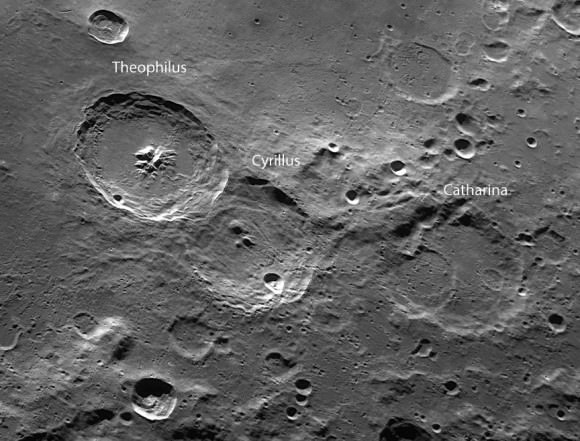
Notice that the rim Theophilus crater is still relatively crisp and fresh compared to the older, more battered outlines of its neighbors. Yet another sign of its relative youth.
Astronomers count craters on moons and planets to arrive at relative ages of their surfaces. Few craters indicate a youthful landscape, while many overlapping ones point to an ancient terrain little changed since the days when asteroids bombarded all the newly forming planets and moons. Once samples of the moon were returned from the Apollo missions and age-dated, scientists could then assign absolute ages to particular landforms. When it comes to planets like Mars, crater counts are combined with estimates of a landscape’s age along with information about the rate of impact cratering over the history of the solar system. Although we have a number of Martian meteorites with well-determined ages, we don’t know from where on Mars they originated.
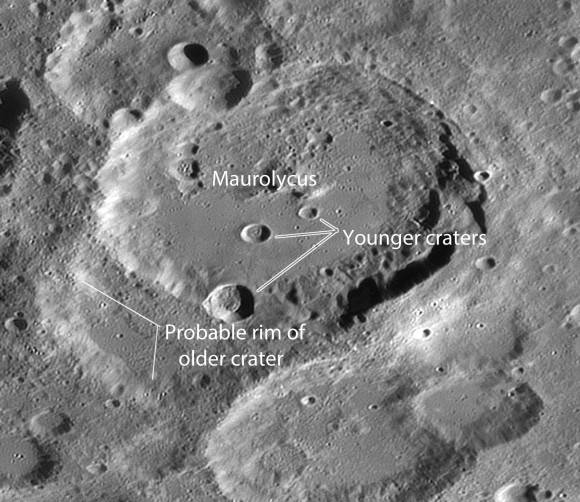
Another crater visible in 10x binoculars tonight is Maurolycus (more-oh-LYE-kus), a great depression 71 miles (114 km) across located in the moon’s southern hemisphere in a region rich with overlapping craters. Low-angled sunlight highlighting the crater’s rim will make it pop near the moon’s terminator, the dividing line between lunar day and night.
Like Theophilus, Maurolycus overlaps a more ancient, unnamed crater best seen in a small telescope. Notice that Maurolycus is no spring chicken either; its floor bears the scares of more recent impacts.
Putting it all into context, despite their varying relative ages, most of the moon’s craters are ancient, punched out by asteroid and comet bombardment more than 3.8 billion years ago. To look at the moon is to see a fossil record of a time when the solar system was a terrifyingly untidy place. Asteroids beat down incessantly on the young planets and moons.
Despite the occasional asteroid scare and meteorite fall, we live in relative peace now. Think what early life had to endure to survive to the present. Deep inside, our DNA still connects us to the terror of that time.
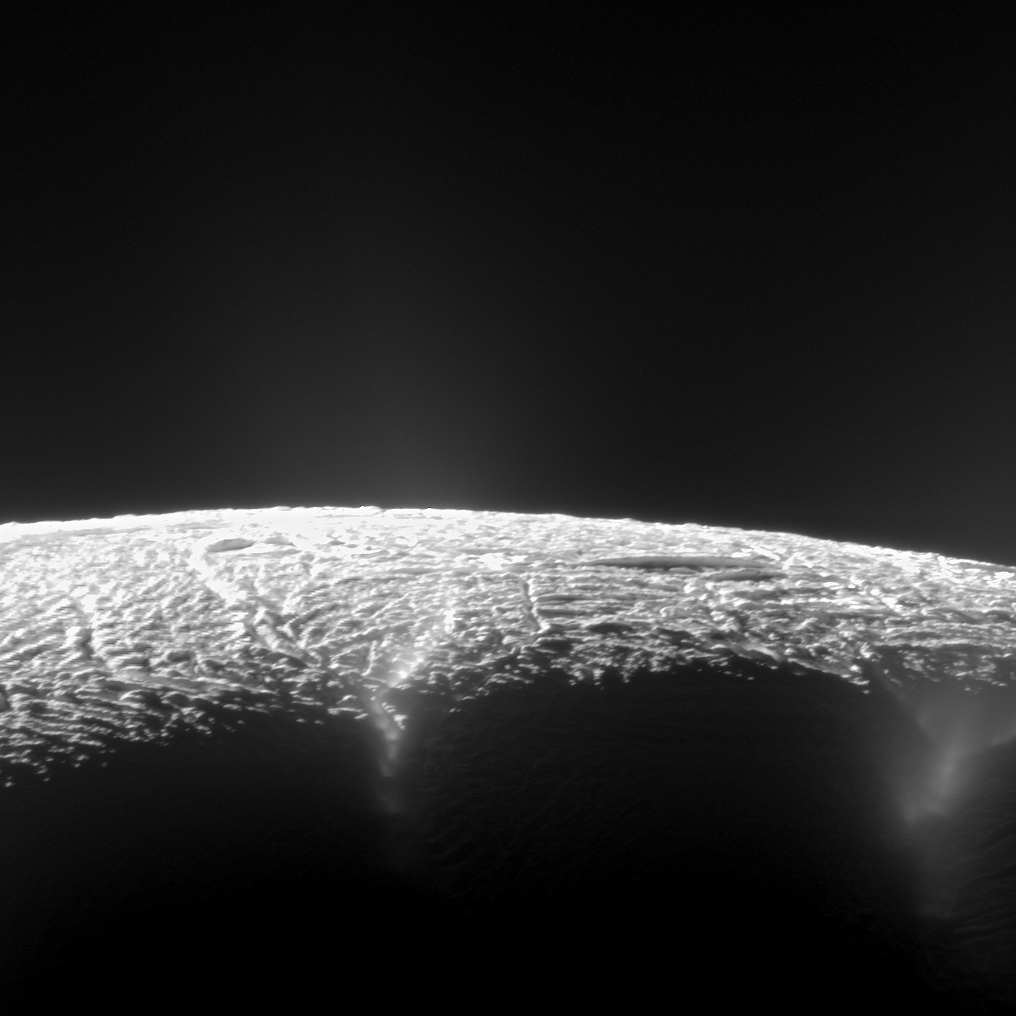
Scientists analyzing the reams of data from NASA’s Cassini orbiter at Saturn have discovered 101 geysers erupting from the intriguing icy moon Enceladus and that the spewing material of liquid water likely originates from an underground sea located beneath the tiny moons ice shell, according to newly published research.
The geysers are composed of tiny icy particles, water vapor and trace amounts of simple organic molecules. They were first sighted in Cassini imagery snapped during flyby’s of the 310-mile-wide (500 kilometers wide) moon back in 2005 and immediately thrust Enceladus forward as a potential abode for alien life beyond Earth and prime scientific inquisition.
Liquid water, organic molecules and an energy source are the key requirements for life as we know it.
The eruptions emanated from a previously unknown network of four prominent “tiger stripe” fractures, named Damascus, Baghdad, Cairo and Alexandria sulci, located at the south polar region of Saturn’s sixth largest moon.
Using imagery gathered over nearly seven years of surveys by Cassini’s cameras, researchers generated a survey map of the 101 geysers erupting from the four tiger strips.
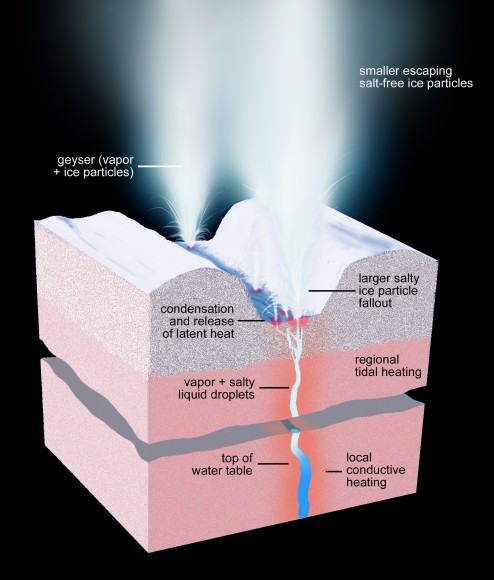
The new findings and theories on the physical nature of how the geysers erupt have been published in two articles in the current online edition of the Astronomical Journal.
Scientists had initially postulated that the origin of the geysers could be frictional heating generated from back and forth rubbing of the opposing walls of the tiger stripe fractures that converted water ice into liquids and vapors. Another theory held that the opening and closing of the fractures allowed water vapor from below to reach the surface.
The geysers locations was eventually determined to coincide with small local hot spots erupting from one of the tiger stripe fractures after researchers compared low resolution thermal emission maps with the geysers’ locations and found the greatest activity at the warmest spots.
After later high-resolution data was collected in 2010 by Cassini’s heat-sensing instruments the geysers were found to coincide with small-scale hot spots, measuring only a few dozen feet (or tens of meters) across.
“Once we had these results in hand we knew right away heat was not causing the geysers, but vice versa,” said Carolyn Porco, leader of the Cassini imaging team from the Space Science Institute in Boulder, Colorado, and lead author of the first paper. “It also told us the geysers are not a near-surface phenomenon, but have much deeper roots.”
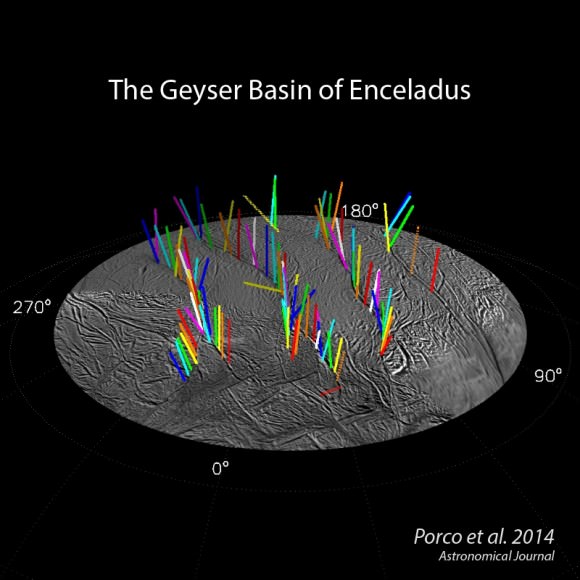
“Thanks to recent analysis of Cassini gravity data, the researchers concluded the only plausible source of the material forming the geysers is the sea now known to exist beneath the ice shell. They also found that narrow pathways through the ice shell can remain open from the sea all the way to the surface, if filled with liquid water,” according to a NASA press release.
These are very exciting results in the search for life beyond Earth and clearly warrant a follow up mission.
“In casting your sights on the geysering glory of Enceladus, you are looking at frozen mist that originates deep within the solar system’s most accessible habitable zone,” writes Porco in her Captain’s Log summary of the new findings.
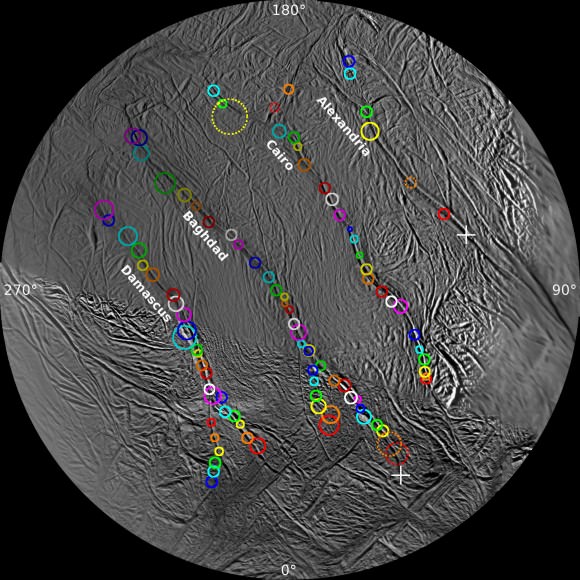
The Cassini-Huygens mission is a cooperative project between NASA, the European Space Agency (ESA) and the Italian Space Agency (ASI). Cassini was launched by a Titan IV rocket in 1997 and arrived at Saturn in 2004.
In 2005 Cassini deployed the Huygens probe which landed on Titan, Saturn’s largest moon sporting oceans of organic molecules and another prime location in the search for life.
The Cassini mission will conclude in 2017 with an intentional suicide dive into Saturn to prevent contamination on Titan and Enceladus – but lots more breathtaking science will be accomplished in the meantime!
Stay tuned here for Ken’s Earth & Planetary science and human spaceflight news.

It’s well accepted that moons form after planets. In fact, only a few months ago, astronomers spotted a new moon forming deep within Saturn’s rings, 4.5 billion years after the planet initially formed.
But new research suggests Saturn’s icy moon Titan — famous for its rivers and lakes of liquid methane — may have formed before its parent planet, contradicting the theory that Titan formed within the warm disk surrounding an infant Saturn.
A combined NASA and ESA-funded study has found firm evidence that the nitrogen in Titan’s atmosphere originated in conditions similar to the cold birthplace of the most ancient comets from the Oort cloud — a spherical shell of icy particles that enshrouds the Solar System.
The hint comes in the form of a ratio. All elements have a certain number of known isotopes — variants of that element with the same number of protons that differ in their number of neutrons. The ratio of one isotope to another isotope is a crucial diagnostic tool.
In planetary atmospheres and surface materials, the amount of one isotope relative to another isotope is closely tied to the conditions under which materials form. Any change in the ratio will allow scientists to deduce an age for that material.
Kathleen Mandt from the Southwest Research Institute in San Antonio and colleagues analyzed the ratio of nitrogen-14 (seven protons and seven neutrons) to nitrogen-15 (seven protons and eight neutrons) in Titan’s atmosphere.
“When we looked closely at how this ratio could evolve with time, we found that it was impossible for it to change significantly,” Mandt said in a press release. “Titan’s atmosphere contains so much nitrogen that no process can significantly modify this tracer even given more than four billion years of Solar System history.”
The team found that our Solar System is not old enough for this nitrogen isotope ratio to have changed as much as it has. By comparing the small change within this ratio, Mandt and colleagues found that it seemed more similar to Oort cloud comets than to Solar System bodies including planets and comets born in the Kuiper belt. The team is eager to see whether their findings are supported by data from ESA’s Rosetta mission, which will study comet 67P/Churyumov-Gerasimenko later this year.
Finally, the study also has implications for Earth. In the past, researchers assumed a connection between comets, Titan and Earth. But these results show that the nitrogen isotope ratio is different on Titan and Earth, suggesting the sources of Earth’s and Titan’s nitrogen must have been different.
It’s unclear whether Earth received nitrogen from early meteorites or if it was captured directly from the disk of gas that formed the Solar System.
“This exciting result is a key example of Cassini science informing our knowledge of the history of [the] Solar System and how Earth formed,” said Scott Edgington, Cassini deputy project scientist at NASA’s Jet Propulsion Laboratory.
The research was published this week in the Astrophysical Journal Letters.
Host: Scott Lewis
Guests: Michael Phillips, Bill McLaughlin, Paul Stewart
Continue reading “Virtual Star Party – June 1, 2014: Paul brings his “A” game!”
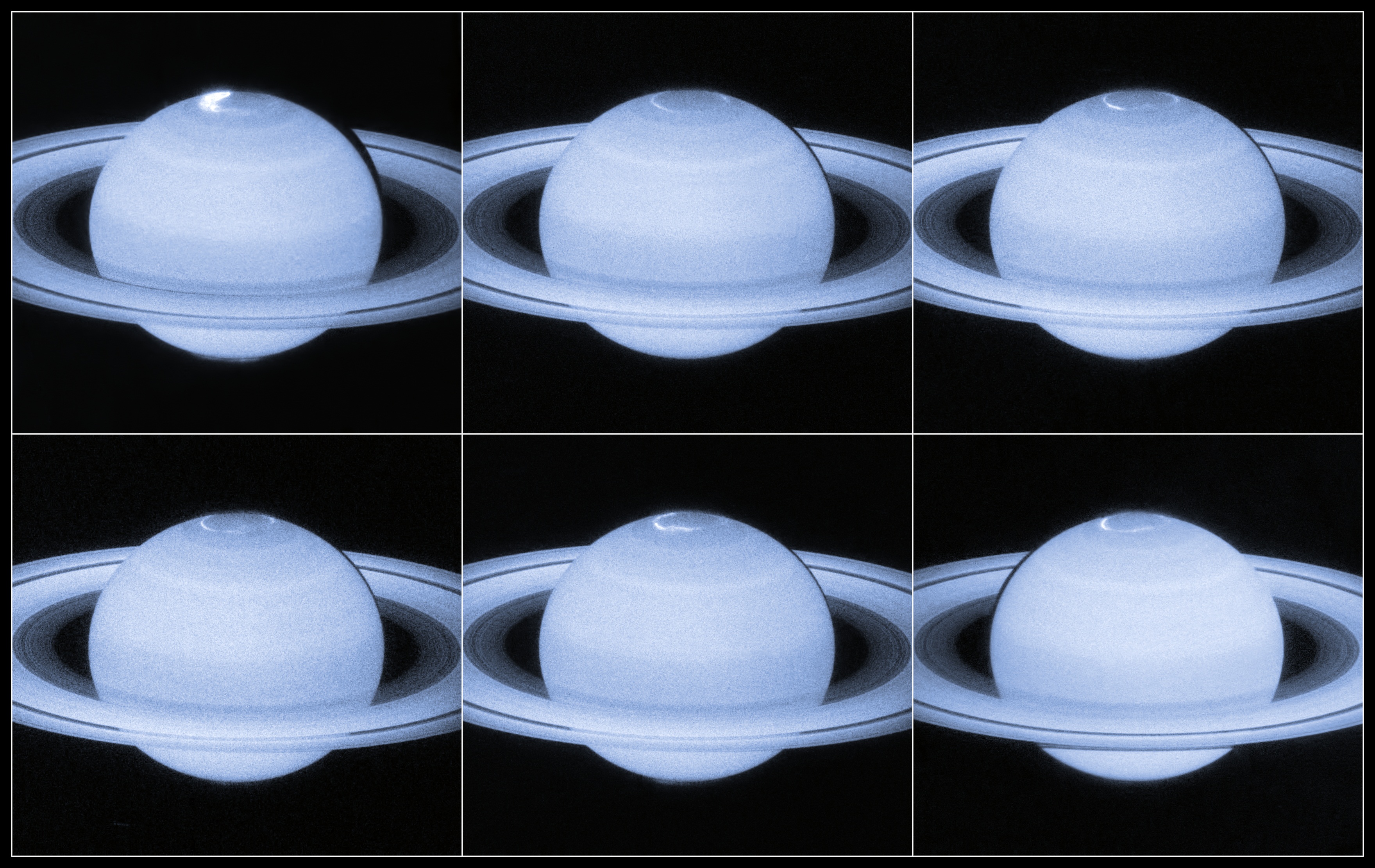
It’s amazing to see what some flashes of light can tell us. New images the Hubble Space Telescope took of Saturn not only reveal auroras dancing in the north pole, but also reveal some interesting things about the giant planet’s magnetic field.
“It appears that when particles from the Sun hit Saturn, the magnetotail collapses and later reconfigures itself, an event that is reflected in the dynamics of its auroras,” the European Space Agency wrote in a description of the image.
“Saturn was caught during a very dynamic light show – some of the bursts of light seen shooting around Saturn’s polar regions traveled more than three times faster than the speed of the gas giant’s roughly 10-hour rotation period.”
And for those readers that remember the music video from Saturn that the Cassini spacecraft took — also of auroras — ESA said this new research complements what the other spacecraft did, too.
The research has been accepted for publication in Geophysical Research Letters.
Source: ESA
Observers in Australia and New Zealand had a special treat this week: watching Saturn disappear behind the Moon during an event called an occultation. (You can read all the details of how and why this happens here in our preview article.) Catching an event like this with a camera is tricky… the bright Moon can wash out the comparatively tiny (from our vantage point) planet Saturn. But here, several astrophotographers had success. Above is a nice view from Silveryway on Flickr.
See an animation of the event below from astroblogger Ian Musgrave:

Ian Musgrave from Australia used a 4″ Newtonian telescope, with a “Point and Shoot” Canon IXUS attached with inifinty to infinity focussing, 3xZoom, and a 25mm eye piece. You can see his entire set of images on his website here.
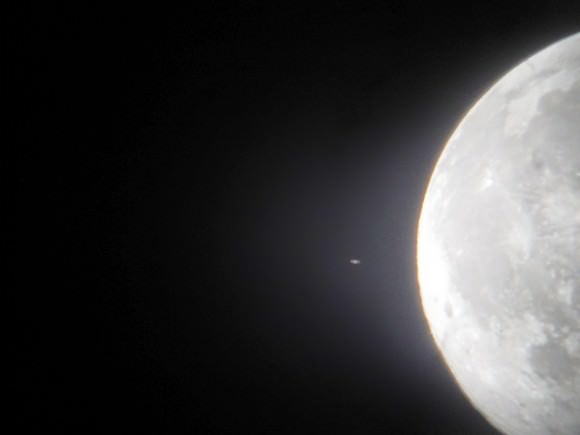
Peter Lake, also from Australia not only took images of the event, but also did a live Hangout on G+.
“Live hangouts and driving a telescope live is a tricky business,” Peter wrote on his website. “I lost focus playing around trying to improve the image due to the thin cloud.” He added that the night sky wasn’t ideal that evening. “The full moon was shining through thin clouds, washing out a bit of the detail.”
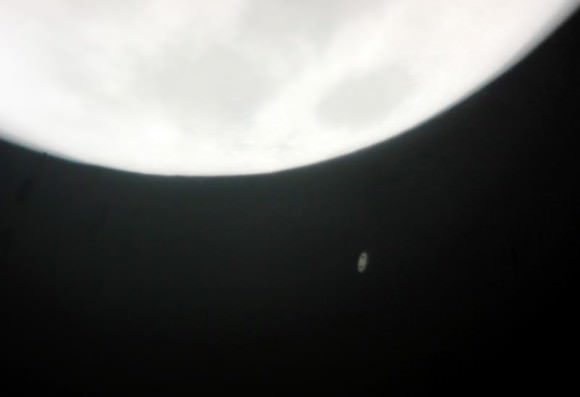
You can watch a replay of Peter’s Hangout below:
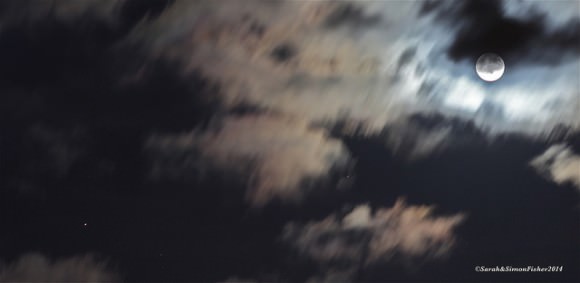
Sarah and Simon Fisher from the UK captured this “diffused” view of Saturn close the Moon on the evening of May 13, 2014.
Want to get your astrophoto featured on Universe Today? Join our Flickr group or send us your images by email (this means you’re giving us permission to post them). Please explain what’s in the picture, when you took it, the equipment you used, etc.